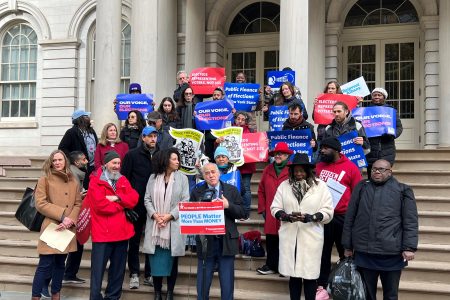In the morning of Wednesday, October 1, 2025, an explosion ripped through the Mitchel Houses public housing complex in Mott Haven, Bronx, leaving a 20-story brick chimney structure—anchored to one corner of the building—largely obliterated and sending debris raining into streets, playgrounds, and adjacent property. Despite the dramatic damage, officials confirmed no injuries or fatalities.
Chronology of the Blast
- The explosion struck shortly after 8 a.m., when many residents remained at home.
- The blast emanated from or near the boiler room / ventilation / incinerator shaft of the building. That vertical shaft, which ran up the side of the structure, was sheared off—creating a massive gash along the building’s edge.
- Bricks, mortar, window units, and other material rained down, burying sidewalks, damaging adjacent facades, and blanketing a playground.
- Fire department units deployed drones, robot devices, and K-9 units to scour the debris for trapped victims. All were negative.
- Con Edison cut gas service to the complex to prevent further explosion risk; water service was also disrupted in some units.
Impact & Evacuations
Though no lives were lost, the blast’s sheer scale and timing suggest a near miss. As Bronx Borough President Vanessa Gibson put it, “We avoided a major disaster here.”
- Residents in the F and G lines (wings adjacent to the chimney) were evacuated immediately. (ABC7 New York)
- NYCHA, in coordination with city and state agencies, is arranging temporary housing for displaced families. (ABC7 New York)
- A reception center was set up at the Mitchel Community Center to deliver food, blankets, referrals, and information. (CBS News)
- Some apartments outside the immediate collapse zone are being cleared only after intensive inspections. (ABC7 New York)
- NYCHA contractors and city officials have begun targeted demolition of unstable chimney remnants to access the boiler chamber, secure the structure, and restore critical services (heat, hot water, cooking gas). (ABC7 New York)
Why This Explosion Mattered
While the absence of casualties is a relief, the incident exposes deeper failures in NYCHA’s maintenance and oversight frameworks—from neglected infrastructure to bureaucratic inertia.
Aging Infrastructure & Deferred Maintenance
Many NYCHA towers date back to the 1940s–1960s. The Mitchel Houses, completed in 1966, are emblematic of a system strained by time, neglect, and funding gaps.
In 2023, an assessment projected that NYCHA would require nearly $726 million in major repairs over 20 years, with heating systems (boilers, flues, chimneys) flagged as among the highest-risk liabilities.
A federal monitor, whose term ended in 2024, described the enduring problem as “the poor physical state of NYCHA’s buildings.”
Known Violations & Prior Warnings
City records show the affected building, 205 Alexander Avenue, had multiple active violations with the Department of Buildings (DOB) related to unsafe facades and structural hazards—some dating back to 2020 and 2024.
CBS News identified at least two open violations for unsafe facades on that address; five neighboring NYCHA buildings on the block likewise had similar citations.
Those structural warnings, while not explicitly referencing gas systems or chimneys, raise legitimate concerns of oversight gaps and risk accumulation.
Seasonal Timing & System Stress
October 1 marks the customary start of heating season in NYCHA buildings. The coincidence of the blast with the heating turn-on prompts speculation about system overstrain, gas pressure shifts, or component wear from seasonal transitions.
Though officials caution it’s too early to conclude causality, the timing will be a focal point in investigations.
The Investigation Underway
Multiple agencies have mobilized to determine exact cause and assign accountability:
- The New York City Department of Buildings (DOB) is examining structural stability, support systems, and whether facade violations contributed to the chimney’s collapse.
- Fire Department (FDNY) is analyzing blast patterns, ignition point theories, and gas line integrity.
- NYCHA has pledged full cooperation and transparency, though public trust is under strain.
- ConEdison engineers are reviewing gas pressure logs, line integrity, and past service complaints. The gas cutoff is essential but complicates reoccupation.
- Inspectors are also probing whether any prior complaints (e.g. reports of gas odor) were ignored. So far, no official 311 or 911 calls about gas smell have been documented for that building in recent days.
The central question remains: Was this a sudden, catastrophic failure of a chimney or boiler-related component? Or was it a preventable gas leak that was ignored or under-maintained?
Policy Failures & Political Stakes
We must highlight how incidents like this should force reflection and reform—especially where political actors and institutional inertia have long allowed failure.
Underfunding, Not Just Mismanagement
NYCHA’s funding crisis is well known. Decades of inadequate capital budgets, deferred maintenance, and political gridlock have produced ticking time bombs. Blaming individual managers or contractors alone misses the deeper problem: an undercapitalized public asset.
Weak Oversight & Enforcement Gaps
The existence of repeated DOB citations without full resolution implies weak enforcement. A system responsive only after disaster is reactive, not preventive.
Accountability Up the Chain
Elected officials—city council, state legislators, the mayor’s office—must be held accountable for oversight failures. Voters deserve clarity: who authorized budgets? Who assessed risk? Who ignored constituent complaints?
Transparency & Resident Empowerment
Residents in NYCHA often lack timely access to inspection records, repair schedules, or safety audits. Transparency should be non-negotiable, not optional.
The Road Ahead: Recovery & Reform
Immediate Priorities
- Safety Clearance – Only after full structural review should residents reenter evacuated units.
- Restoration of Utilities – Priority restoration of gas, heating, water, and electricity must be handled safely and transparently.
- Timely Repairs – Quick stabilization of building shell, chimney, and boiler system is essential to prevent further degradation.
- Compensation & Support – Displaced families should receive housing, food, and financial support with minimal red tape.
Longer-Term Reforms
- Mandatory safety audits of all NYCHA boiler/chimney systems ahead of each heating season.
- Capital funding prioritization focused on risk zones—e.g. older boiler systems, known violation sites, high occupancy towers.
- Stricter DOB penalty enforcement when citations go unresolved.
- Independent oversight commission with real authority to inspect, flag, and compel remedial action in public housing.
- Resident reporting mechanisms with whistleblower protections for maintenance staff and tenants who raise hazard flags.
Conclusion
The partial collapse at the Bronx NYCHA building was a dramatic wake-up call. Though no lives were lost, the incident exposed the dangerous intersection of aging infrastructure, fiscal neglect, and lax oversight. The timing—on the first day of heating season—only underscores systemic vulnerabilities.
If city and state leaders continue with the status quo of patchwork fixes and underfunding, history may repeat itself—this time with far worse consequences. The residents of Mitchel Houses, and all NYCHA tenants, deserve more than temporary fixes: they deserve safe, resilient housing, backed by accountable governance.
It is now time for bold reform, structural investment, and moral responsibility. The question for Bronx voters: will your representatives deliver, or will another collapse be the next headline?
Featured image credit: DepositPhotos.com








